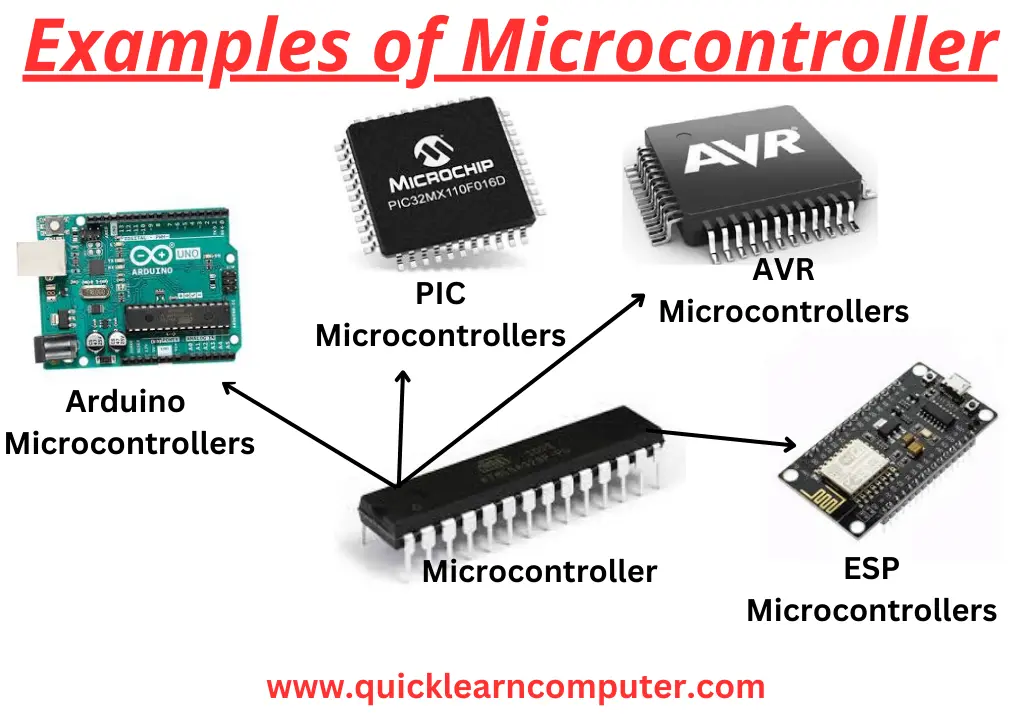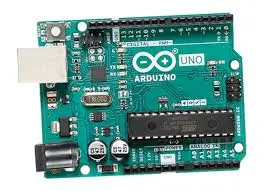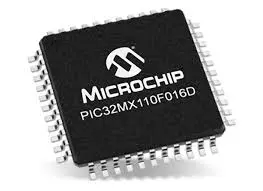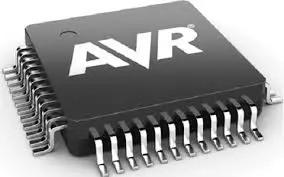Microcontrollers are essential components in modern electronics, powering everything from household appliances to industrial automation.
These compact, self-contained computing devices integrate a processor, memory, and input/output peripherals, making them ideal for embedded systems.
In this article, we will explore various examples of microcontrollers, their features, and their applications in different fields.
What is a Microcontroller?
A microcontroller (MCU) is a small computing device designed to execute specific control-oriented tasks. Unlike general-purpose computers, microcontrollers are optimized for real-time applications and consume minimal power.
Key Features of Microcontrollers:
Low power consumption.
Multiple I/O pins for peripheral connectivity.
Embedded timers, ADCs, and communication protocols (I2C, SPI, UART).
Real Life Examples of Microcontrollers
Microcontrollers come in various types, ranging from simple 8-bit processors to advanced 32-bit chips. Here are some of the most popular microcontroller families and their characteristics.

1. Arduino Microcontrollers
Arduino boards are widely used in prototyping and DIY projects due to their simplicity and vast community support.

Popular Arduino Microcontrollers:
Arduino Uno (ATmega328P) – 8-bit microcontroller with 32KB flash memory.
Arduino Mega (ATmega2560) – Features 256KB flash memory and more I/O pins.
Arduino Nano – A compact version of the Arduino Uno.
Applications:
Home automation
Robotics
IoT (Internet of Things) projects
2. PIC Microcontrollers (Microchip Technology)
PIC microcontrollers are known for their efficiency and flexibility in embedded systems.

Popular PIC Microcontrollers:
PIC16F877A – 8-bit MCU, widely used in educational and industrial applications.
PIC18F4550 – Supports USB communication, ideal for interfacing with computers.
PIC32MX – A 32-bit MCU offering enhanced performance.
Applications:
Industrial automation
Medical devices
Automotive systems
3. AVR Microcontrollers (Atmel, now part of Microchip)
AVR microcontrollers are known for their high performance and ease of programming.

Popular AVR Microcontrollers:
ATmega328P – Used in Arduino Uno, offers excellent performance for embedded applications.
ATmega32 – Higher memory capacity, suitable for more complex projects.
ATtiny85 – Ultra-small size, ideal for miniature embedded systems.
Applications:
Consumer electronics
Smart sensors
LED controllers
4. ESP Microcontrollers (Espressif Systems)
ESP microcontrollers are widely used for IoT applications due to their built-in Wi-Fi and Bluetooth capabilities.
Popular ESP Microcontrollers:
ESP8266 – Low-cost Wi-Fi MCU, widely used in IoT projects.
ESP32 – Dual-core 32-bit MCU with Wi-Fi and Bluetooth capabilities.
Applications:
Smart home devices
Wireless sensors
Wearable technology
5. STM32 Microcontrollers (STMicroelectronics)
STM32 microcontrollers offer high performance with ARM Cortex-based architecture.
Popular STM32 Microcontrollers:
STM32F103 – Affordable and widely used in embedded development.
STM32F407 – Advanced features, including DSP and floating-point unit.
Applications:
Automotive control systems
Aerospace technology
Industrial robotics
Choosing the Right Microcontroller
When selecting a microcontroller for your project, consider the following factors:
Processing power – 8-bit, 16-bit, or 32-bit architecture.
Memory capacity – Flash, RAM, and EEPROM.
Power consumption – Battery efficiency for portable devices.
Peripherals – Communication interfaces, ADC/DAC, timers.
Cost – Budget constraints for production-scale applications.
FAQs
1. What is the difference between a microcontroller and a microprocessor?
A microcontroller is a self-contained computing device with integrated CPU, memory, and peripherals, whereas a microprocessor requires external components for memory and I/O functions.
2. Which microcontroller is best for beginners?
Arduino Uno (ATmega328P) is one of the best choices for beginners due to its ease of programming and vast community support.
3. Can microcontrollers run an operating system?
Most microcontrollers do not run traditional operating systems. However, some high-performance MCUs support real-time operating systems (RTOS) like FreeRTOS.
4. What are the advantages of using ESP32 over ESP8266?
ESP32 offers dual-core processing, Bluetooth support, and more GPIO pins compared to ESP8266, making it suitable for more complex IoT applications.
5. How do I choose the right microcontroller for my project?
Consider factors such as processing power, memory capacity, power consumption, available peripherals, and cost when selecting a microcontroller.
Conclusion
Microcontrollers are the backbone of embedded systems, driving innovation in various industries. From beginner-friendly Arduino to high-performance STM32, different microcontrollers cater to a wide range of applications.
Understanding their features and applications helps in selecting the right one for your specific needs. Whether you're working on IoT projects, robotics, or industrial automation, there's a microcontroller that fits your requirements.